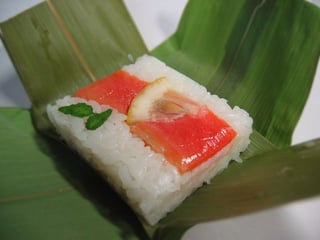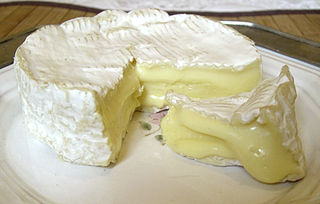In addition of FuzzyChef's answer: Some cheaper (?) but less durable (in terms of re-using) food packaging mostly without cheating by curing:
Wrapping
In south-east Asia and central America even today's people use big leaves instead of aluminium foil to wrap their food1: For example, bánh chưng, a (actually very perishable) Vietnamese new year's rice cake, is wrapped in banana leaves and can be stored up to 2 weeks unrefrigerated. Apparently, leaves of Terminalia catappa and some particular Phrynium can be used as well.
Lotus leaves are also used.
Some Mesoamerican dishes (like (naca)tamale) are wrapped in corn husks.


Source 1 Source 2
Sasazushi ("Sushi wrapped in a bamboo leaf"), a type of oshizushi, is a pressed sushi from the Kansai region:
 Source
Source
Does rice straw count (granted, natto is fermented while being wrapped...)?
Historically, nattō was made by storing the steamed soybeans in rice
straw, which naturally contains B. subtilis natto. The soybeans were
packed in straw and left to ferment.
 Source
Source
Century eggs and some kind of salted duck eggs are wrapped into a clay-mixture. Beside curing, the eggs are less prone to break.

(Bees)Wax is/was used to control moisture.
Apart from usual wrapping...
gourds, calabashes in particular, are used as beverage and food containers. Animal skins (stomach, bladder). treated with saps and resins, were used as a beverage container, like bota bags, colambres, and waterskins.


Even ostrich eggshells dated to 60000 years ago are found to be functional.
Sounds stupid: Food stays fresh if kept alive. At least in today's Vietnam, in rural areas it's common that you buy chickens, fish, frogs etc. alive if you don't intend to cook immediately. When needed, you'll slaughter the (rather small) livestock at home. That's a way to circumvent the famous 2-hour-rule.
Wrapping food with more food (that is meant to be eaten)
As Paulb pointed out in a comment, potentially melting foodstuffs like chocolate can be dipped into a sugary syrup which then harden into a candy shell.
This reminds me of jelly beans or freeze dried fruits in chocolate (a very modern class of confectionery) coated in a thin layer of edible wax (e.g. carnauba wax, beeswax). Chocolate truffles also hold their booze or ganache in chocolate shells.
Burrata is a fresh Italian cheese made from mozzarella and cream. The
outer shell is solid mozzarella, while the inside contains
stracciatella and cream, giving it an unusual, soft texture. It is
also defined by some sources as an outer shell of mozzarella filled
with butter or a mixture of butter and sugar. [...] The finished
burrata is traditionally wrapped in the leaves of asphodel. [...] When
the burrata is sliced open, a spurt of thickened cream flows out.
(Source, emphasis mine)

Do edible moldy cheese rinds with a very soft cheese center count as wrapping? Imagine the mess if this was a cream cheese without the rind! Drawback: Curing is involved.

Obvious one: sausage casings.
"Wrapping" food with more food (that is not meant to be eaten)
Besides the pie crust mentioned by Fuzzy Chef: I don't think dry aging / hanging meat is a modern invention. When meat is dry aged, the hard outer shell covered in mold is discarded. Same with some cheese rind.2
1 Wrapping with leaves is not exclusively done for packaging purposes but for taste as well.
2 Contrary to the putrid meat layer, clean non-waxed cheese rind have a second use as a umami bomb in
stocks.









